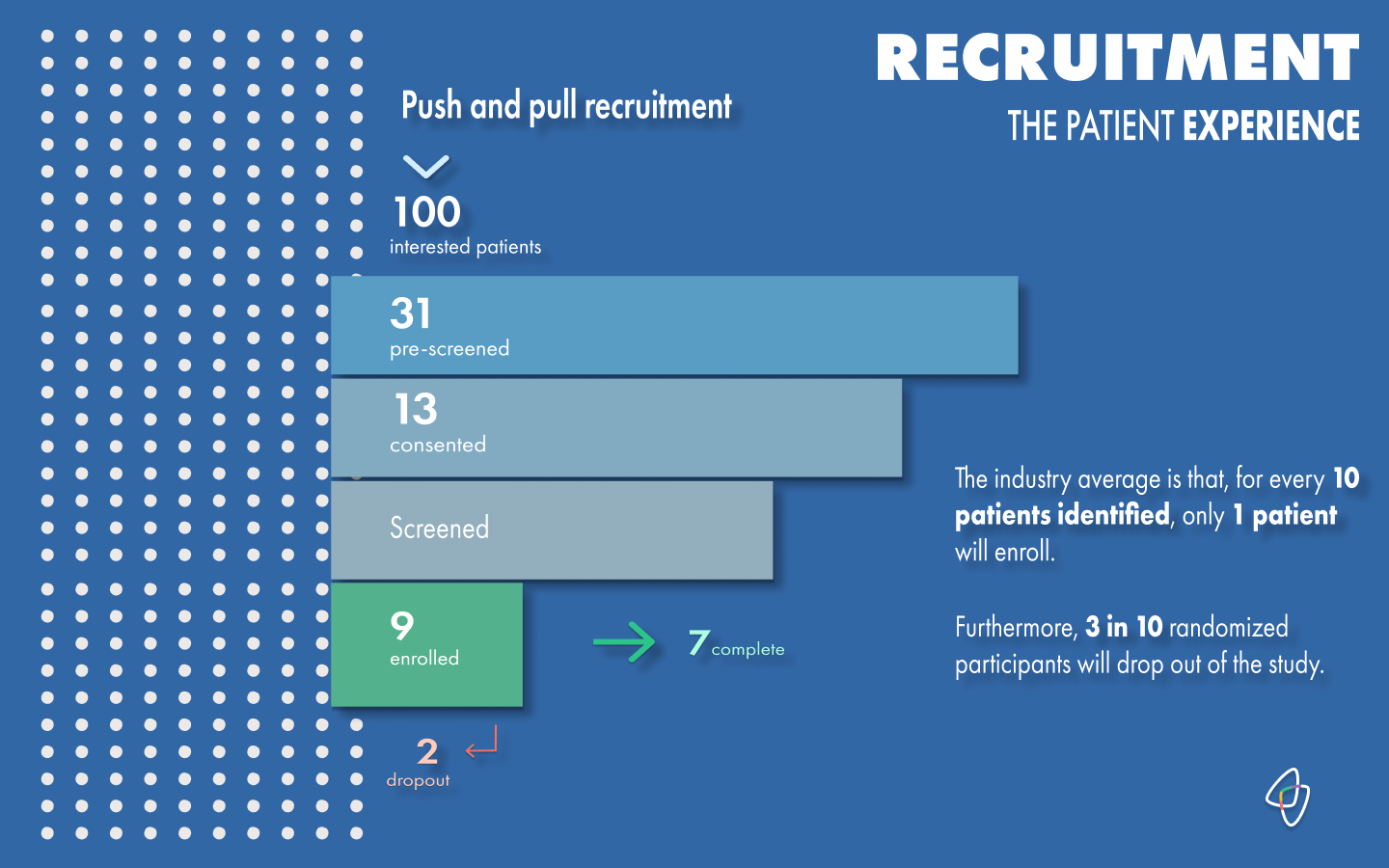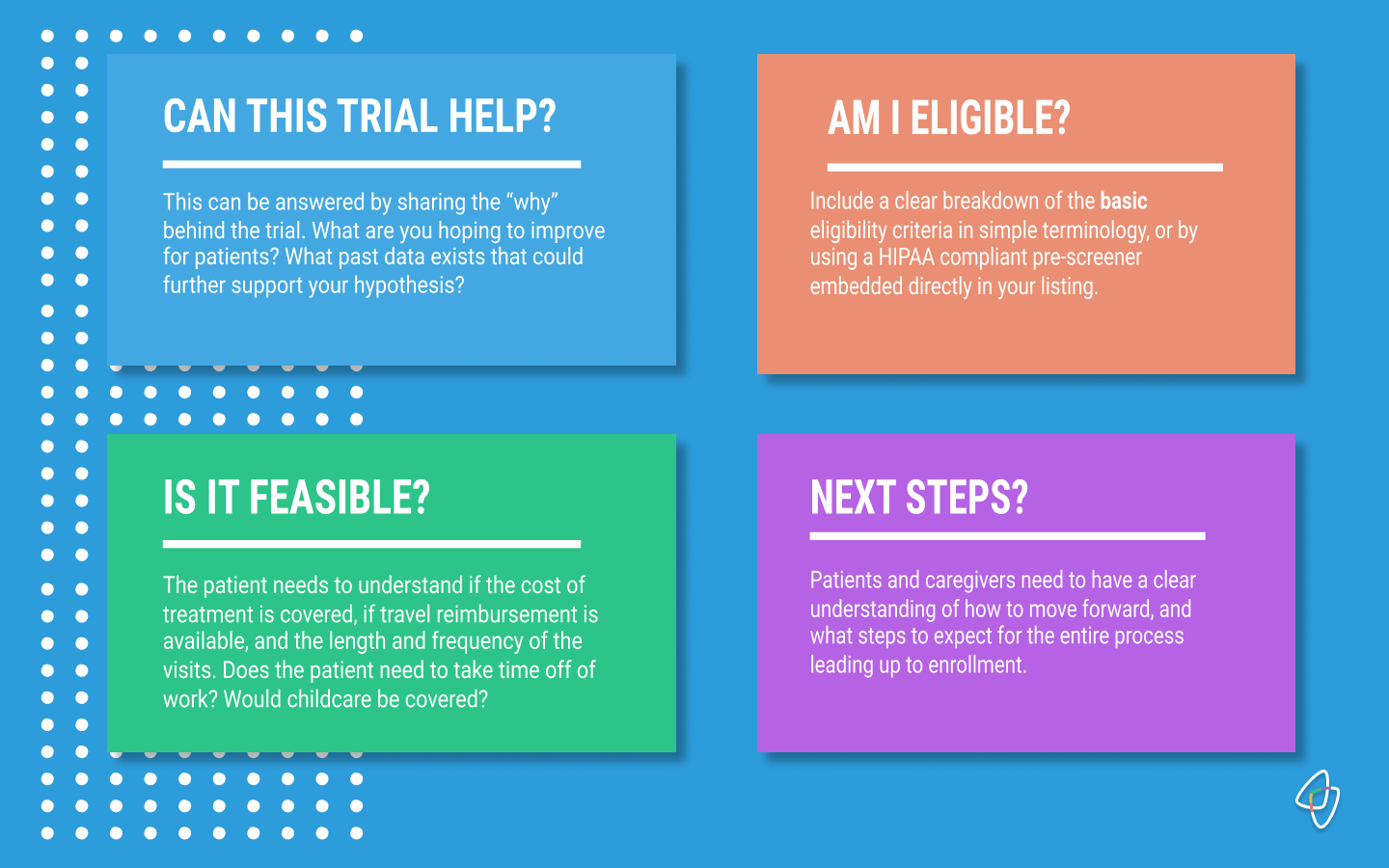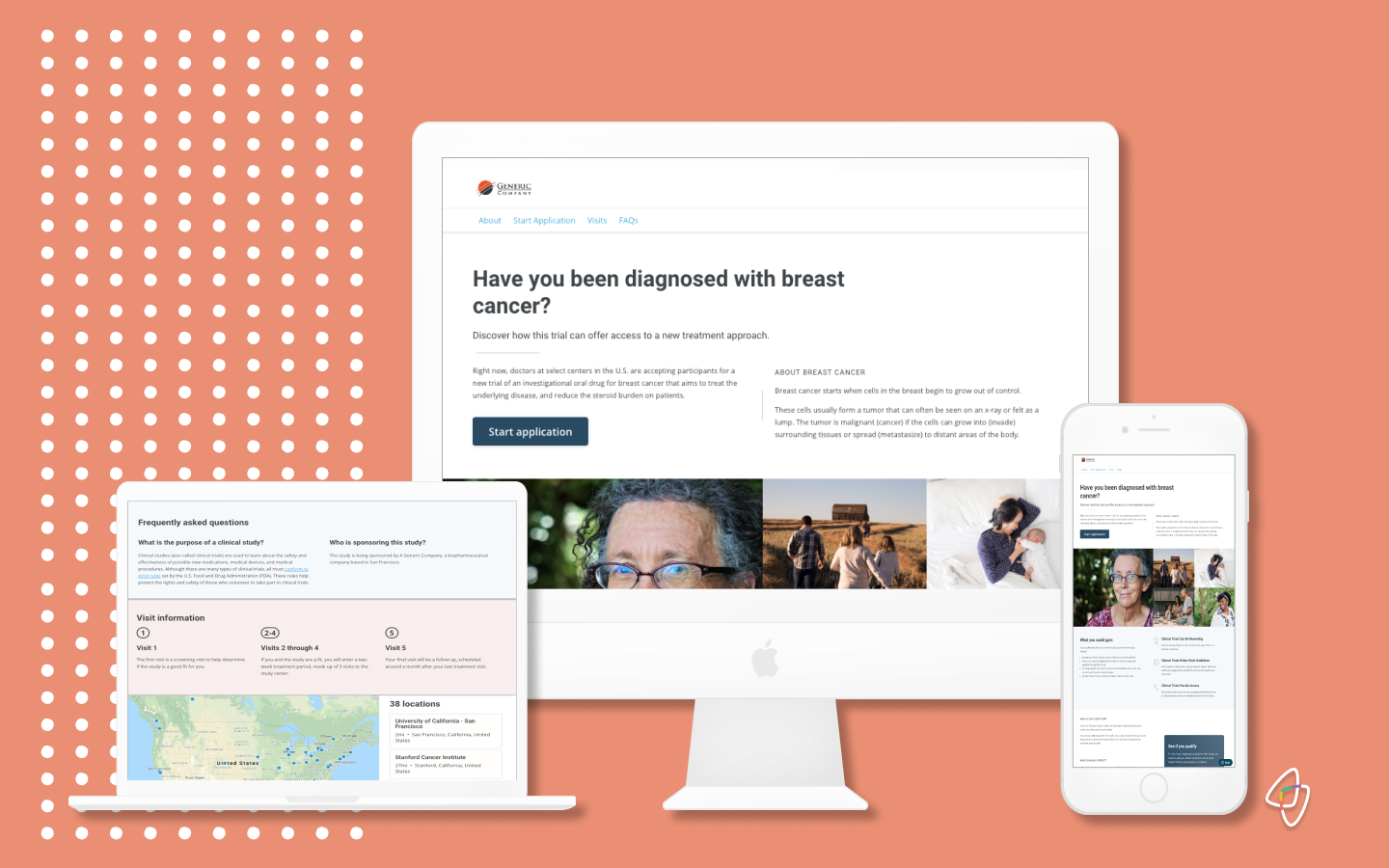The Recruitment Process

This is what an industry-average recruitment funnel looks like. Starting with candidates who may be interested in your clinical trial the flow gradually reduces to the very few who make it to enrollment. In order to reach enrollment one can either spend capital flooding the number of generalized patients at the top of the funnel, or expend additional money and labor plugging the holes along the way.
Most companies focus on flooding the top of the funnel in order to boost recruitment rates. This is reflected in many recruitment vendors’ pricing, which scales with user clicks or pre-screens, but does not incentivize enrollment. Some drop-off is unavoidable in any clinical trial due to the nature of narrow eligibility criteria among other disqualifying factors that cannot be changed (age, sex, condition, etc.).
However, we have found that a surprising amount of drop-off exists from eligible candidates due to the friction caused by the traditional trial enrollment process.

WINITIAL CONTACT
THE PROBLEM
Patients ask similar questions when approaching a clinical trial:
- Can this trial potentially help me?
- Does it look like I can participate?
- Is it feasible (financially and logistically) for me to participate?
- What is the next step to see if I can join the study?
The answers to these questions are often buried in complicated language, foreign to the average reader. Simply understanding a study listing itself is burdensome to the patient or caregiver. Eligibility criteria is often unclear, misleading, or even false. Often the only means of follow up is a generic phone number or email response that doesn’t address the patient’s specific concerns.
OUR SOLUTION
It is vitally important to ensure that an easy-to-read resource exists to answer the four questions above, and that it is provided to the patient immediately (not buried in the corner of a website menu) wherever you are trying to reach them.
When answering these questions, keep in mind the range in health literacy of your audience. For example, a user might be a newly diagnosed patient or one with a history of chronic illness. They might be a caregiver, spouse, friend, or even clinician. They may have varying levels of comfort navigating a computer. English may not be their native language.

CONNECTING WITH THE SITE
THE PROBLEM
Once a patient decides to pursue a trial, the barriers to accessing real humans are significant. In most cases, a phone number or email is included in the trail listing. Email inquiries can go unanswered for weeks and the phone number may be outdated, unanswered, or routed to a central desk.
If the patient is lucky or persistent enough to speak with a coordinator, they’re often asked for a protocol number so that the researcher knows what study the user is referencing. Unfortunately, not all study listings include their corresponding reference numbers. Now the patient has the right human on the line, but not enough information to move forward. The permutations we have heard from the patients we’ve helped go on seemingly without end.

OUR SOLUTION
Providing a digital experience that is welcoming, tailored, and optimized to help turn interest into immediate action leads to measurable impact in recruitment performance.
Today’s problems often require digital solutions. In the case of a clinical trial, the rule is no different. We believe that each study should have its own dedicated landing page with live chat support, which helps to answer the four critical questions and even provides insight into the PI, trial sites, or sponsoring entity.
At Clara, we’ve seen an improvement in listing conversion rates of over 10x when a digital pre-screener is embedded in the trial listing itself over simply listing contact information for study staff members.
By integrating directly on the landing page, you can turn pre-qualified patients into prospective enrollees in seconds.
When creating a website for your clinical trial, make sure to take careful consideration of how your information directs the user throughout the page. Test the site with a diverse group of patients, caregivers, and clinicians.
The “user flow” of the page is crucial for every step of the trial funnel: making your trial seamless from first interaction through screening and well into the study itself preempts as many leaks as possible.
Optimizing image placement, highlighting important information, and creating clear calls to action in your outbound marketing and on your study’s website demonstrably increase conversion rates. Make sure your website has no loading issues: every second of delay can reduce conversion rates by 20%.
Finally, optimize for mobile.
As you optimize these components, be sure to check that your site is optimized and works for each of the main web browsers on all devices.
To read about how the Screening Process impacts Recruitment, Read Ahead
